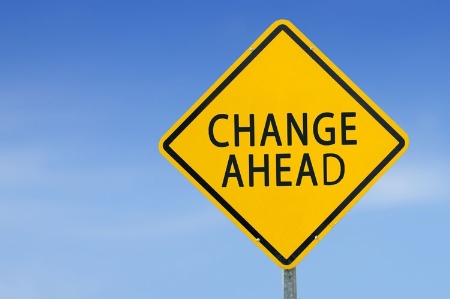The only constant is change. Although the phrase originated with a Greek philosopher, it rings especially true today, when organizations are required to adapt quickly to shifts in the economy, advancements in technology and evolving customer preferences. Whether it’s an updated accounting system, management restructuring, downsizing or brand new policies, change is intended to maximize business performance, but the upside isn’t always clear to the whole team.
Organizational change evokes many feelings in employees. Some people get angry at the idea of having to change, while others get excited and their engines rev to get started. Some team members need more information before they can embrace change, while others are simply frozen in terror.
As HR managers, we often experience our own opinions and feelings about change at the same time as we communicate with employees about what to expect. It can be difficult to adapt to organizational adjustments quickly enough to educate and support the team the way we’d like.
Anticipating concerns and questions is the first step to prepare to implement change. Gathering information and reinforcing the positive organizational vision that motivates the change is also key to smooth sailing through a significant shift. As you prepare, it helps to be aware of the four stages many employees undergo when they’re immersed in organizational change.
Shock
People are often shocked or in denial when they learn news of a change at their workplace. The tendency is to immediately consider how it applies at a personal level. Employees need time to adjust. They need information, they need to understand what is happening and how they can get help or support to adapt to the change in their daily jobs.
This is a stage when it’s critical to communicate clearly and regularly, making sure not to overwhelm team members with too much information. It’s also important that employees learn about workplace changes before external stakeholders, so they won’t be caught off guard.
Resistance
As people process details of the transition they may start to feel concern, anger or resentment. Some employees even experience fear. Team members may push back by expressing their feelings or concerns and venting their anger. This is a tenuous stage for many organizations. If this stage is badly managed, it can make things more challenging.
As someone responsible for change, you can prepare for this stage by carefully considering the impacts and objections people might have. Make sure you address these early with clear communication and support and by acting to mitigate problems and concerns. Since reaction to change is very personal and can be emotional, it’s impossible to pre-empt everything. Make sure you listen and watch carefully during this stage so you can respond to the unexpected.
Learning
The learning phase is a turning point for any organization undergoing changes. As team members begin to accept the change, they often seek more information to explore what it means to their daily work responsibilities. The HR manager’s role is to provide the supports needed to adapt to the new normal, including learning materials and additional time. Make sure people are well-trained and get a chance to experience what the changes will bring as early as possible.
Acceptance
This is the moment you’ve been waiting for. The acceptance phase is when changes start to become second nature and team members embrace changes to the way they work, resulting in greater harmony and hopefully, productivity. Celebrate this phase and thank team members for their hard work in adapting to the new way of doing business. Remind everyone of the larger purpose of the organization and reinforce successes along the way.
By understanding and preparing for these four phases of change, HR leaders can support the team and anticipate challenges and opportunities in the process. With information, training, and time to adjust, team members will feel supported and will adapt to the new work conditions smoothly and with positive results.
For the past two years, fitness giant Goodlife has beat out stiff competition to be named as a finalist for the Canadian HR Team of the Year, only just missing out on the top spot.
Organizations that think their HR department could make it to the finals – or be crowned as Canada’s Best HR Team – are now being encouraged to nominate themselves for this year’s Canadian HR Awards.
Due to take place in September, the event offers organizations the chance to be recognized for a number of HR initiatives including Most Effective Recruitment Strategy, Best Reward and Recognition Strategy, and Best Learning and Development Strategy.
More information about the Toronto event can be found online.

